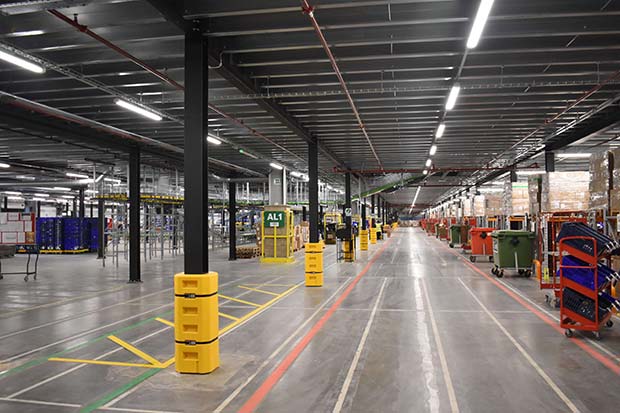Steve Gardner, Managing Director, Eco UK Group: Industries are continually advancing, and while that comes with benefits, it also has environmental downfalls. With this in mind, many sectors are establishing a circular economy to tackle the rapid change in the climate which can no longer be ignored.
Minimising waste and lowering the amount of produced pollution is paramount for achieving environmental sustainability, and focused attention on the lighting industry is one sure way to do this.
Lighting alone contributes to 5% of the world’s Co2 emissions. It is needed everywhere: in warehouses, stores and our homes; anywhere in need of daily human functionality. While some focus is being placed on lighting and the emissions produced, more still needs to be done to achieve the government’s target of zero carbon emissions by 2050.
Make the switch
One simple solution to achieving a circular economy is by switching from traditional lamps to LED lighting. Much can be said about LEDs, but one of the most important things to remember is that they produce significantly less waste.
Traditional lamps are notorious for producing just 5% light energy when in full use; with the other 95% transformed into heat. This makes them highly inefficient for their purpose, especially when lighting larger areas, such as warehouses. LEDs however, are 80% more efficient, with 95% of its energy being attributed to light and just 5% to heat. Not only that, but they shine up to 3x brighter than their incandescent counterparts, meaning less bulbs are needed to light the same spaces.
In addition to this, LED bulbs have longer life spans, meaning, they do not need to be changed on a frequent basis. While the installation of LEDs may prove more expensive short-term, the long-term benefits are highly cost effective in investment. One incandescent bulb on average burns for 1,200 hours while a single LED bulb can, depending on use, burn for as long as 50,000 hours.
Disposal of LED lighting is also much safer with the environment in mind; the bulbs emit no toxic emissions. With small switches like this making a big impact, decision-makers in distribution centres are already helping to create a circular economy all across the world.
Greenlight for greener light
Many sectors nationwide are already trying to adopt a more ‘green’ way of running their businesses. Going green not only protects the environment, but it is also more cost effective than one could imagine. It is imperative for manufacturing sites to re-address their business models, and make room for environmentally-friendly products that will produce smaller carbon footprints. Installing LED lighting is one of the simplest ways to produce a ‘green’ establishment.
Fluorescent bulbs have been continually dumped into landfills due to their short life-spans. Efforts must be made to eradicate this in order to prevent mercury leaching into groundwater or evaporating into the air, by switching to LED bulbs which contain no toxic material, have a much longer life cycle and are safe to dispose of with general waste. There is also no risk to health with LED lighting, yet many industrial businesses are still unsure about ‘going green’ if their current system is still functioning.
The International Energy Agency (IEA) believes that improving energy efficiency can greatly contribute to reducing global greenhouse gas emissions by as much as 40%. There is dire need for businesses to adopt eco-friendly practices that not only have great global impact, but also increase operational productivity and well-being of warehouse staff.
A circular economy: what does this mean for the future?
The future is dark without large-site businesses investing in eco-lighting. A global switch to LEDs could save over 1,400 million tons of Co2 and avoid the construction of 1,200 power stations to facilitate the demands of fluorescent light manufacturing.
The industry is working tirelessly to influence the switch, providing eco-friendly lighting solutions for businesses across the UK in order to optimise resources already in use and help reduce the overall global consumption of raw materials.




Comments are closed.